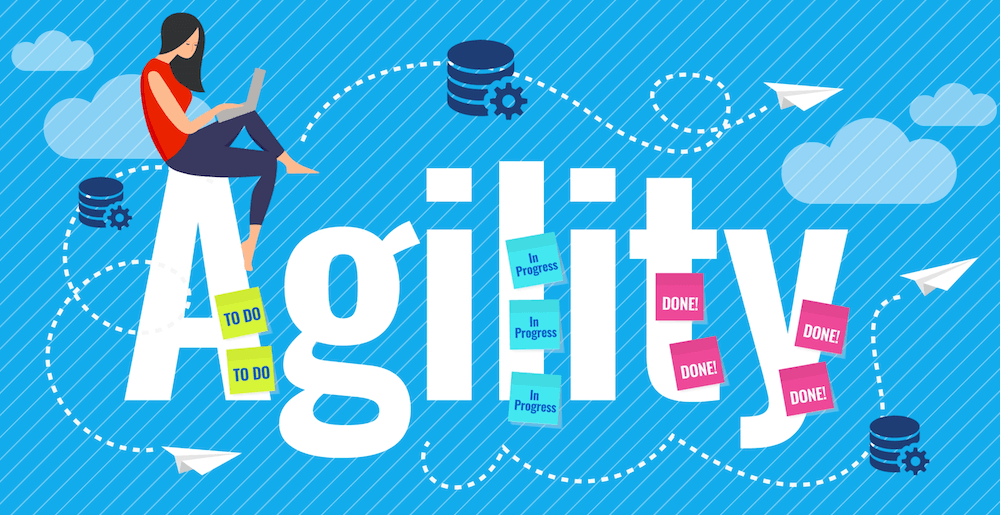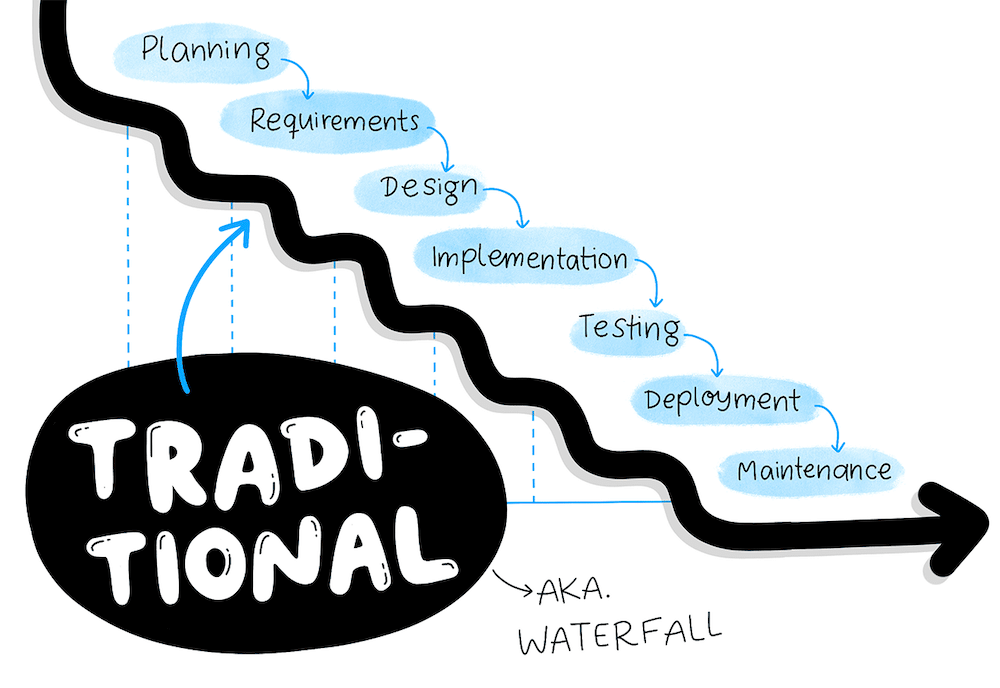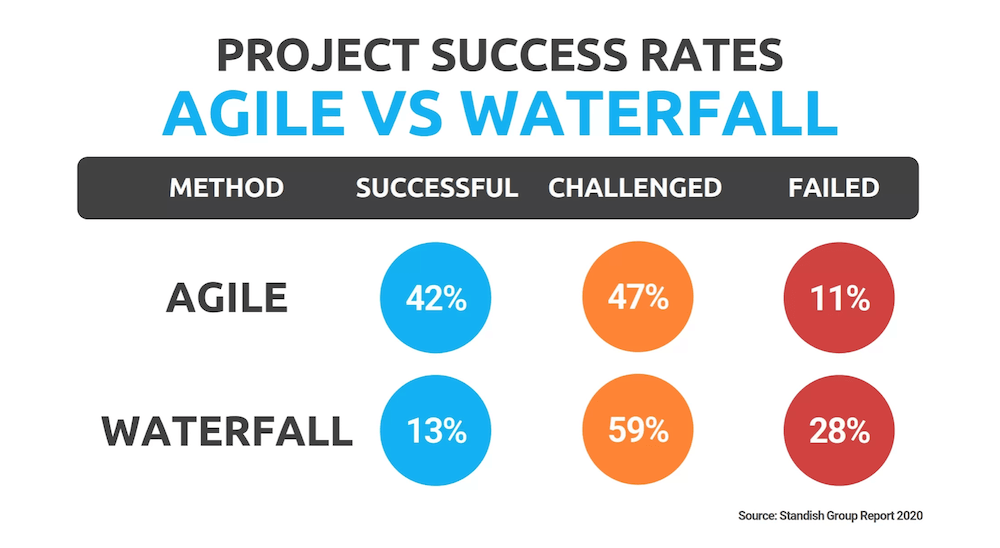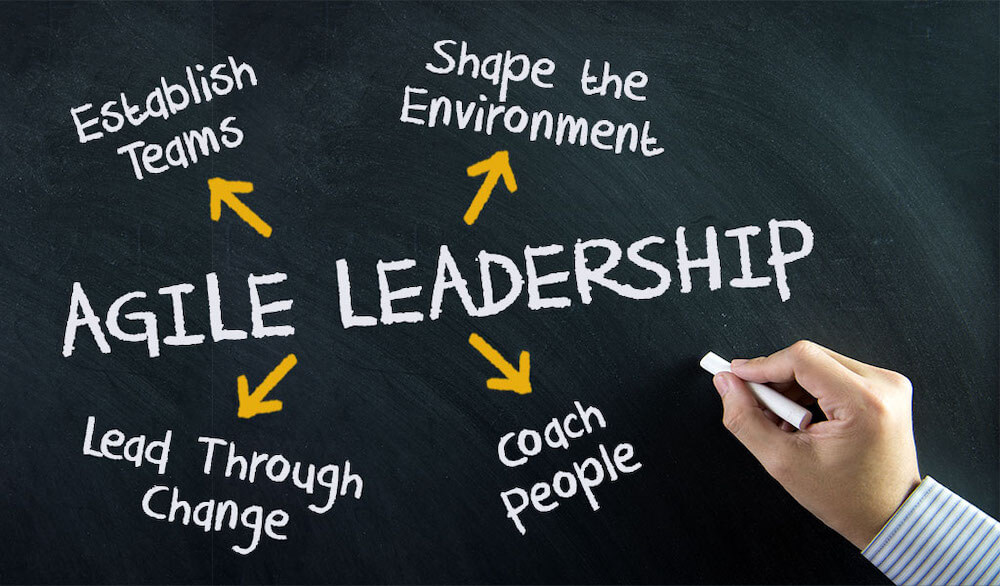Project management holds a key role in any organization of all kinds. This important process leads a team to work effectively and ensures all goals are achieved as per predetermined parameters. Two main types of approaches you often see in most companies include: agile vs traditional project management.
This Designveloper article will emphasize their major differences and potential trends in this segment. Accordingly, we expect to help you identify a proper method for your business to have a decent kickoff in any project.
Before knowing about the agile vs traditional project management you should know this: What is Agile Software development?What is Agile Project Management?

Being “AGILE” means dealing with changes and new situations as fast as possible but still guaranteeing a deliverable’s best quality. Based on this definition, experts in lightweight processes (e.g. eXtreme Programming or Feature-Driven Development) coined the term “AGILE” and discussed the Agile Manifesto afterwards.
Accordingly, agile project management is the process of breaking whole projects down into smaller increments accomplished within short timescales. Its mechanism of action lies behind the understanding that no product is perfect because user requirements are always changing.
This method works based on important values as follows:
- Quick responses to the ever-changing demands of customers through early and continuous releases;
- Focus on communications between members, including developers and business people;
- Emphasis on working products and flexible prioritization of product specs;
- Priority on customer feedback.
How Agile Teams Work
There’s no standard workflow for your company to follow in agile. But normally, truly agile teams build the right agile mindset and conduct timeboxing tasks based on the Agile Manifesto’s principles.
Typically at Designveloper, teams work through such fundamental steps:
- Work with clients to define problems, plan and analyze input parameters, and constructively contribute to suitable digital solutions;
- Design and develop a minimum viable product (MVP) that only contains the most necessary features and functionality for the first launch. A product owner and stakeholders can track work progress through communication tools;
- Test a deliverable before deployment;
- Receive feedback from real users and review what teams have or haven’t done to meet predetermined objectives;
- Carry out maintenance and improvements through continuous updates.
Common Agile Frameworks
“AGILE” is a broad term, which covers numerous types of agile methodology such as Scrum, Kanban, Lean Project Management, and more.
When to Use Agile
Agile methodologies are widely used when new features are definitely necessary to react to changes. Such approaches also suit teams that require no detailed planning and clear documentation. This is because their work depends much on customer needs which are believed to continuously change.
Such characteristics make traditional agile methods better suit small-scale projects or SMBs. But, the introduction of scaling agile solutions (e.g. SAFe or LeSS) helps large enterprises with business agility. They are effective alternatives to traditional analogs in large-scale projects.
What is Traditional Project Management?

Contrary to agile, traditional project management is a sequential process where projects are implemented within pre-planned steps. Thereby, when working in a traditional environment, you need to consider the following factors:
- Goals should be clearly determined;
- Detailed plans of what and how to do should be devised in advance;
- Requirements are supposed to remain fixed while timeline and budget can vary;
- Team members should be conscious of their responsibilities and requirements;
- Building proper documentation also plays an important role as it regulates standards for a whole process to follow.
How Traditional Teams Work
In a traditional setup, the whole workflow is in a linear order: conceptualization, planning, implementation, review, deployment, and closure.
Unlike agile, interactions with real customers and even stakeholders are limited during the development phase. Beyond that, a project manager takes almost full control of a project. Any problem needs reporting to the manager and team members must receive his/her approval for even small changes.
Common Traditional Frameworks
Some traditional frameworks include Waterfall and PRINCE2. But because of the dominance of Waterfall, this name is frequently used to refer to traditional methodologies in general.
When to Use Traditional Methodology
Traditional methodologies are popular when changes are insignificant. That’s why input parameters are assumed not to change accordingly.
Key Differences Between Agile vs Traditional Project Management
The summary table below gives you an objective, in-depth insight into the different characteristics of agile vs traditional project management.
| Attributes | Agile methodology | Traditional methodology |
| Business structure | Iterative | Sequential |
| Client requirements | Flexible as per iterations | Clearly determined before development |
| Project scale | Small and medium scale | Large-scale |
| Development model | Continuous delivery and adaptation to changes | Develop a full deliverable based on fixed parameters and anticipation |
| Communication with clients and end-users | Agile approach requires regular involvement of clients and end-users since work starts | Client and user involvement is limited. They only get contacted during the planning stage and when final outcomes are released |
| Issue management | When problems arise, all team members work together to handle it | Incurred problems must be reported to a project manager before any modifications |
| Process | Customer- and product-centric | Directive and formal |
| Testing | Testing is planned and implemented in each iteration | Comprehensive testing is planned for an entire process |
| Estimation | Tech leader supports a whole team to estimate | Project manager offers estimates and receives approval from the project office (PO) for the whole work |
| Review | Review and retrospective are executed by a whole team at the end of each iteration | Most reviews are conducted by team leaders |
Prospects and Reasons Why More Companies Choose Agile Methodology
Both agile and traditional project management methods have their own pros and cons. So each of the approaches best suits different projects and companies.
Having said that, there’s no exaggeration to say that an increasing number of companies favor agile methodologies over traditional solutions. The 15th State of Agile Report by Digital.ai in 2021 indicated remarkable growth in Agile adoption within software development and non-IT teams.
In addition, the 2020 Chaos Report of Standish Group also emphasized the higher success rate of Agile projects (42%) than that of Waterfall (13%). This finding comes as no surprise to many experts and business people.

According to KPMG specialists, digitization opens more avenues for businesses to create values online and thus reach wider niches. But it also contributes to a highly competitive – or says, more challenging – playground. The digital era also encourages unpredictable changes in user demands at times. Consequently, a traditional approach’s final outcomes can become outdated and fail to meet such needs at the time of launching.
To quickly respond to digital developments and changes, business agility is key. So little wonder that many companies are now turning their focus on agile methodologies. The 2021 Digital Report summarized the top important drivers behind the decision of adopting business agility:
- Improve the ability to manage changing priorities;
- Better adapt to volatile market conditions;
- Speed up product delivery and facilitate delivery predictability;
- Increase team productivity and morale;
- Enhance IT and business alignment;
- Improve product quality, and support further maintenance and updates;
- Mitigate project risks and costs;
- Better manage team members with clearly assigned roles and responsibilities.
Traditional agile methodologies are relatively appropriate for small and medium-scale projects. But, scaling agile solutions (e.g. SAFe or LeSS) are effective alternatives to traditional analogs to help large enterprises with business agility.
Switching From Traditional to Agile Approaches: Possible or Not?
Having a big shift to agile methodologies is possible. But it’s not an overnight story. Agile transformation is most popular in software development on a team level, as surveyed by KPMG in 2019. But each IT team has its unique strategy, ambition, and perspectives toward Agile. Thus the process of becoming truly agile is different across teams.
Apart from IT development, Agile principles and approaches are increasingly penetrating into other business functions such as marketing and sales or HR. And there’s no denying that the path to Agility among these departments is not the same for these departments.
So here are some important considerations you should closely look at before switching from traditional to agile approaches:
Decide Which Business Functions Should be Agile

In the battle of agile vs. traditional project management methods, the former seemingly wins over most organizations because of its huge benefits. However, is it a sensible decision to apply business agility company-wide right at the beginning of the transition? Many companies admit that this is among the most challenging work. Not to mention that there are multiple considerations around enterprise-level Agile transformation such as available resources, willingness, or capabilities.
So the big question you should answer first is at which level business agility will be applied first. One strategy for successful Agile transition is to start small and smart instead of going all (Carilli, J. F., 2013).
Grasp the Concept of Agility
Your company should have a strong understanding of agility concepts on the level your company wants to apply (e.g. IT level or enterprise level). It’s also important to know that those concepts become more complicated on a larger scale. The below video of KPMG interprets how scaling agility works:
Start With Basics
Your company should commence with executing the basic frameworks and tools like Scrum and Kanban. Leaders should first guarantee that some small Agile teams become mature on a team level, which lays a solid foundation to drive business agility enterprise-wide.
Include Agility in Your Strategy
You should regard Agility as your company’s strategic priority and establish a realistic Agile ambition. Leaders should spend adequate time building up the Agile mindset, harnessing the available knowledge across a company and devising proper plans to prepare for Agile transformation.
Don’t Ignore Leadership

Working toward Agile transformation, you need to understand the importance of leadership. As a key factor, leaders should understand staff needs toward Agility, empower employees to transform their working style, stimulate intrinsic motivations and build a business culture where Agility can thrive.
Leaders act as a bridge to facilitate transparent communications and alignment between senior management and employees on what to do. This job is one of the major challenges for leaders, shared by Thomas de Rucker, Agile Transformation Leader at Proximus.
So, it’s important to build trust in his colleagues and ensure they are always ready for Agile transformation through continuous Lean-Agile training. Even leaders themselves need to be eager to change, practice what they preach and constantly learn to avoid misinterpretations due to lacking knowledge.
Leaders can develop specific solutions or follow the Modern Agile approach to identify what should alter in ways of working, culture and leadership.
Consider the Needs of Your Teams
Teams are key determinants to realize agility needs in your company. To give team members leeway to make constructive contributions, you need to strive for them to have mutual understanding and mindset. Other elements such as clearly distributed roles and effective feedback loops in problems are essential to get skilled employees in Agile teams.
Establish Agile Performance Measures
Last but not least, Designveloper strongly advises you to find suitable methods and tools to measure performance. Evaluating how the workflows prove critical despite agile or traditional project management. In Agile methodology, Story Points, the Definition of Done, and Velocity are three common solutions to evaluate whether teams reach preset value metrics.
The post Agile vs Traditional Project Management: Key Points in 2022 appeared first on Designveloper.
April 03, 2022 at 04:14PM











No comments:
Post a Comment